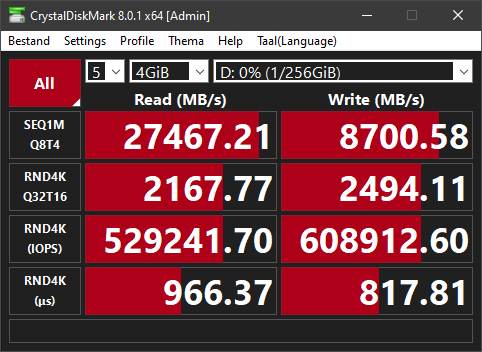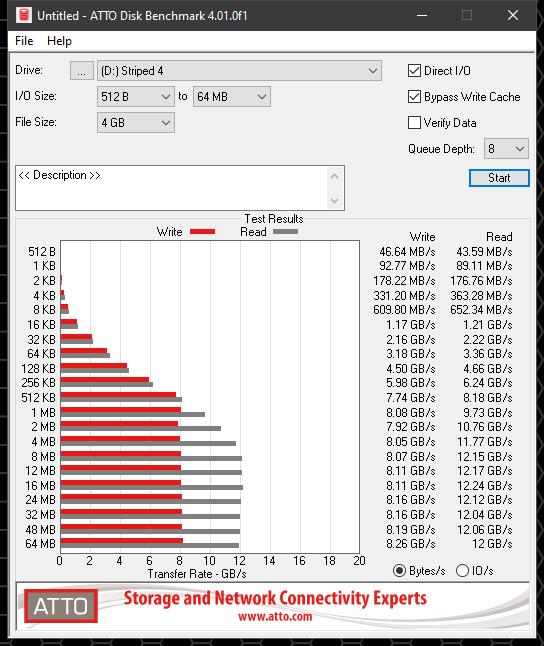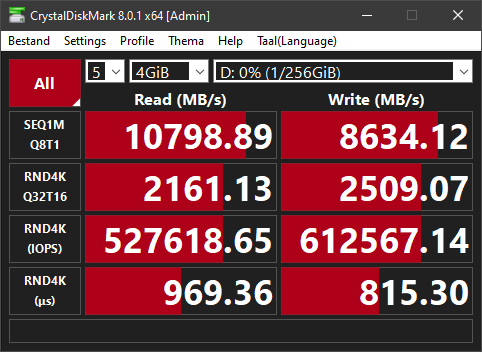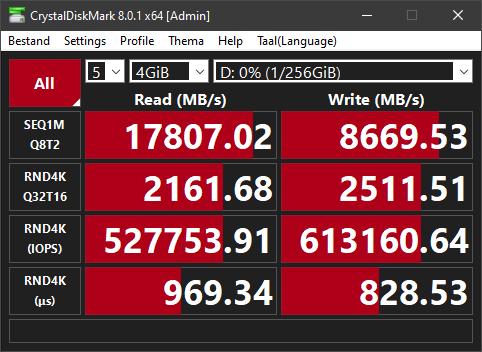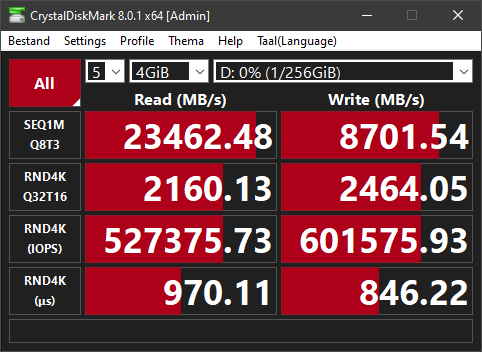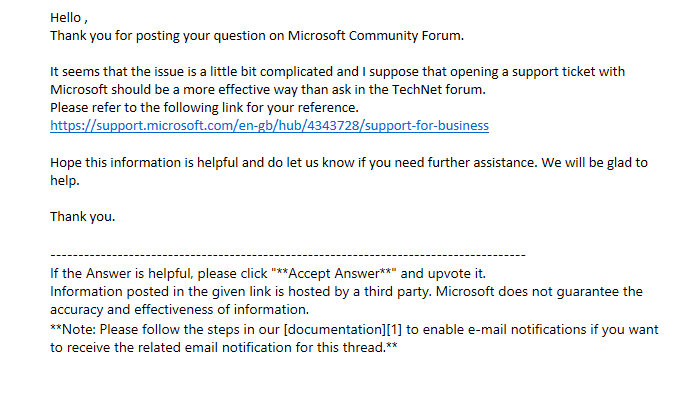I got over 27GB/s seq. read on a MS Striped volume of 4 gen 4 NVMe's by adjusting the benchmark conditions.
The bottleneck appears to be the use of 1 thread (Logical CPU) on my Threadripper pro system.
Increasing the number of threads to 4 (of 32 available on my system) already give the expected read performance.
But this is a max performance benchmark test. Not a realworld test.
The realworld tests show the speed, available in normal use, for this volume at approx max 10 GB/s seq read
It looks like I have to do some additional testing to further figure this out.
The benchmark tests are run on a Windows 10 professional system. (see my comment for additional benchmarks)
To me it shows my system has the potential to perform.
But to benefit from it, the operating system's file system has to be capable of multi threading file handling so applications can actually read and write at these speeds.
What interests me is if p.e. Windows server has multi threaded file handling and could make the high max performance, realworld values.
